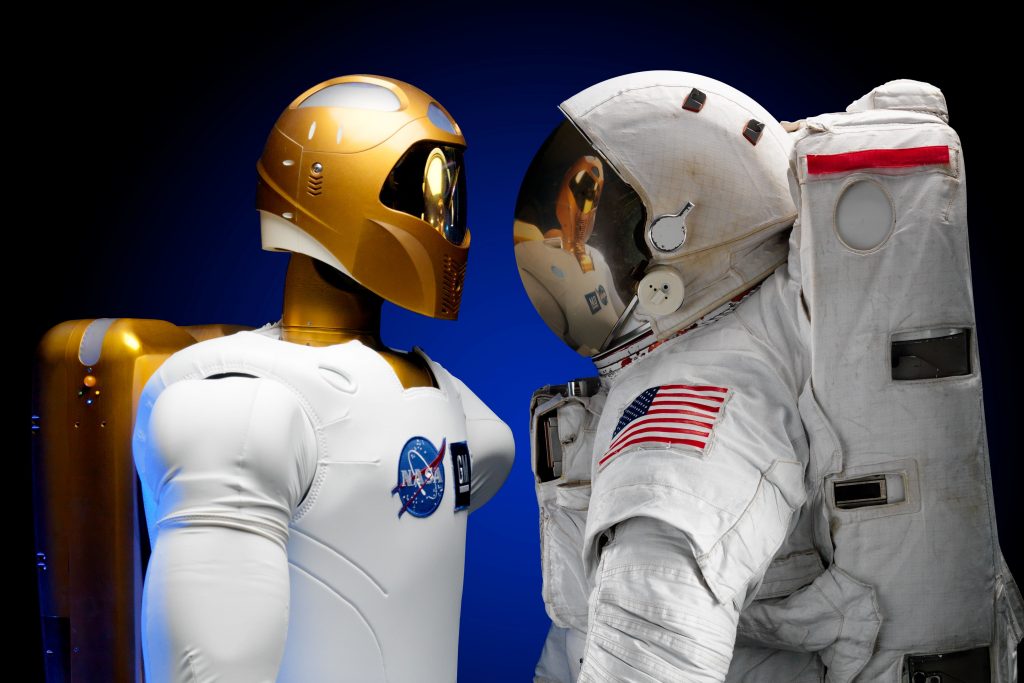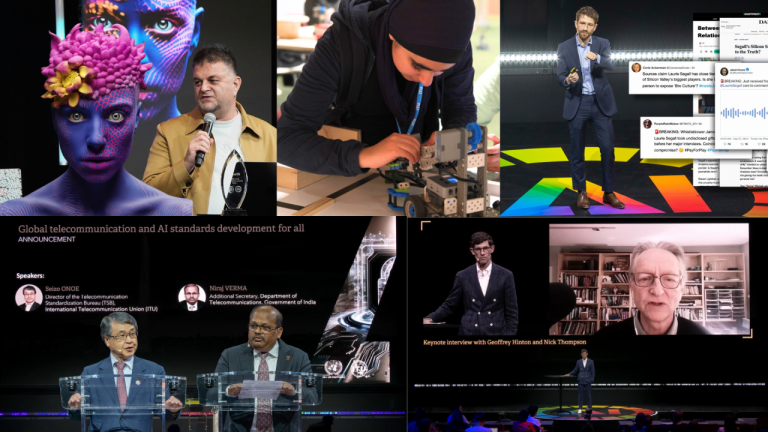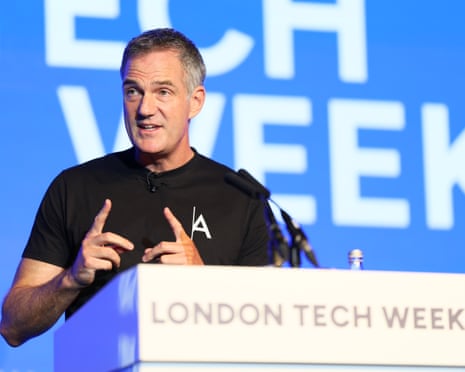Unlocking Future Work Innovations by Embracing Historical Lessons
Artificial Intelligence and Education: Navigating the Future of Work
In today’s fast-paced economy, the term “fourth industrial revolution” has gained traction, referring to the era where advanced technologies like AI, automation, and robotics are becoming integral to our everyday lives. However, the reasoning behind this label may not be immediately clear. To understand this, we can look back at the previous three industrial revolutions in modern British history.
The first revolution occurred in the late 18th and early 19th centuries, marked by the advent of coal and steam power. This period saw a significant migration of the workforce from rural areas to cities in search of employment. The second revolution introduced electric power and steel, which enabled mass production. The third industrial revolution, which took hold at the turn of the 21st century, was characterized by the emergence of the internet and the far-reaching effects of rapid globalization.
Each of these transformative periods was defined by technological disruption and substantial social change, especially in the demand for skills. As we look at today’s landscape, we observe similar transformations driven by AI and the decentralization of labor, which heralds what is recognized as the fourth industrial revolution.
However, one significant shift distinguishes today’s industrial revolutions from those of the past: the cycle length has reduced from decades to a matter of years. This accelerated pace poses a major challenge for both businesses and individuals striving to meet the evolving demands of the labor market. Organizations must rethink how they approach skills, training, and career development in order to capitalize on emerging opportunities.
This transition isn’t merely about the technology creating new jobs while rendering others obsolete; it also involves understanding how existing roles will evolve. Individuals in vulnerable positions must find ways to transition into roles that complement technology, maximizing their value in this new landscape.
Reimagining Education
For nearly fifty years, career trajectories followed a linear model. Educational paths gradually refined skills for specific niches, culminating in particular job roles. This linear approach was sustainable over long cycles of job demand. Today, however, the rapid turnover of skills is reshaping what we know about career paths and job identity.
As skills evolve quickly, traditional models of education and career development struggle to keep pace. This disruption not only complicates structures of learning but challenges individuals’ long-standing connections between their jobs and their identities. Employment typically provides us with purpose; when skills become obsolete, our sense of purpose can suffer as well.
The Shift in Professional Identity
In “The Adaptation Advantage,” authors Heather E. McGowan and Chris Shipley address the importance of adaptability in a rapidly changing job landscape. They note that identities in the workplace—labels like “teacher,” “plumber,” or “politician”—can create barriers to embracing change. To successfully navigate the future of work, it is essential to shift our focus from rigid job roles toward fostering overall adaptability.
This adaptable mindset will be crucial as we equip ourselves for a workforce that continues to evolve at unprecedented speeds. By prioritizing transferable skills and enhancing our adaptability, we can prepare for a dynamic future where our professional identities can thrive amidst ongoing change.
In today’s workplace, differentiating between transferable and non-transferable skills presents a challenge. Recognizing skills that are applicable across various roles enables employees to transition laterally into new positions as needed.
Socially Responsible Employers
While adaptability is often viewed as a trait employees should have, it holds equal, if not greater, importance for employers. Companies that maintain a skilled workforce gain a competitive edge; however, the continuous hiring of new talent to meet evolving skill demands is an unsustainable and costly approach. Instead, organizations should shift their focus inward, concentrating on retaining, retraining, and redeploying current employees to fill in-demand roles.
Identifying which employees would benefit from reskilling can be accomplished by creating a skills inventory that highlights both valuable and cross-functional skills. This approach not only avoids the financial and emotional toll of layoffs but also helps streamline processes, enhancing both role relevance and efficiency.
Rethinking ‘Work’
Change often meets resistance, especially during uncertain times. However, it’s crucial not to remain stagnant in a comfortable status quo, as this can obstruct progress toward a brighter future. Emphasizing our innate ability to adapt can help us move successfully into new territories. Adaptation is a fundamental human trait that ensures resilience during sudden environmental shifts.
Both employers and employees need to reassess their perceptions of what constitutes a ‘job.’ Prioritizing adaptability through reskilling is vital to unlock the significant potential of the future workplace. All it takes is a willingness to embrace change and rethink traditional approaches.
For those interested in exploring discussions on these topics, consider attending industry events such as the 5G Expo, IoT Tech Expo, Blockchain Expo, AI & Big Data Expo, and Cyber Security & Cloud Expo World Series, with upcoming gatherings in Silicon Valley, London, and Amsterdam.
Germany Takes the Lead in Europe’s AI Manufacturing
NVIDIA is playing a pivotal role in establishing Germany as a frontrunner in Europe’s artificial intelligence manufacturing landscape. This partnership is set to boost local industries and optimize production processes through cutting-edge AI solutions.
Advancements in MedTech AI
Recent programs focusing on hardware and clinical applications are transforming the MedTech field. These innovations promise to enhance patient care and streamline healthcare operations, showcasing the immense potential of AI in medical technology.
Overcoming the AI Execution Gap
Despite the growing enthusiasm for AI, a significant challenge remains: approximately 80% of AI projects fail to transition into production. Understanding the factors that contribute to this gap is essential for companies aiming to harness the true potential of AI.
AI in Education
Teachers in England have received official approval to integrate AI tools into their teaching methods. This initiative is expected to enhance educational experiences and personalize learning for students, marking a significant step towards modernizing education through technology.
Artificial Intelligence Insights
Engaging applications of machine learning are transforming various sectors, from enhancing cloud-native container security to revolutionizing finance and logistics. Understanding these advancements can provide businesses with valuable insights to remain competitive in the digital age.
Education, Legislation & Government
Teachers in England have received approval to implement AI in classrooms. This decision marks a significant step in integrating advanced technology into educational settings, aiming to enhance learning experiences.
Artificial Intelligence, Sponsored Content
The cryptocurrency sector is increasingly influenced by AI technologies. This shift is transforming how transactions are conducted and how information is processed within the industry, showcasing the potential of AI in financial innovations.
AGI, Artificial Intelligence, Companies, Development, Ethics & Society
Sam Altman, the CEO of OpenAI, has announced that we are entering a new era of superintelligence. This declaration highlights the rapid advancements in AI and poses ethical considerations regarding its impact on society.
For those interested in receiving the latest in technology news along with premium content, subscribing is the best way to stay informed.
Explore:
About Us | Contact Us | Privacy Policy | Cookie Policy
Categories:
Applications | Companies | Deep & Reinforcement Learning | Enterprise | Ethics & Society | Industries | Legislation & Government | Machine Learning | Privacy | Research | Robotics | Security | Surveillance
AI News is a part of TechForge.
Here’s a comprehensive list of countries across various continents, touching on regions from the Caribbean to the South Pacific. The array includes nations with diverse cultures, languages, and histories. Whether it’s the tropical beauty of the Bahamas or the historic landscapes of Italy, each country offers unique experiences. This list serves as a global snapshot, showcasing places ranging from Argentina to Zambia.
Some notable mentions include:
- Australia
- Brazil
- Canada
- France
- India
- Japan
- United States
This enumeration highlights the vast array of countries that inhabit our world, inviting exploration of both widely recognized nations and lesser-known territories. Each has its distinct character and charm.
For anyone keen on travel, cultural exploration, or global affairs, this list serves as an excellent starting point for learning about diverse nations and their contributions to our global society.







